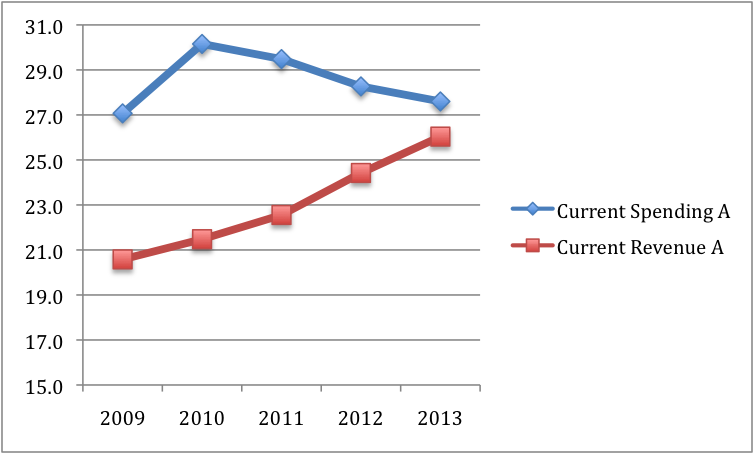Much of the post-budget analysis has focused on whether the correct balance between taxation and spending measures has been achieved. In fact, the 5 year plan leaves this quite open, at least in terms of the ultimate convergence towards the 3 percent budget target in 2013. This is because the plan leaves unallocated €4 billion in 2012 and €7 billion in 2013.
In the two charts below, I show the polar alternatives: in the first chart, all of the allocation is to higher taxes in 2012 and 2013; in the second chart, all the adjustment is to lower spending in 2012 and 2013. (Fiscal variables are expressed as ratios to GDP.)
The economic debate at the next general election may well focus on the relative merits of the two adjustment paths. [Of course, the likely outcome is an interior solution.]


2 replies on “The Five Year Plan”
“The economic debate at the next general election may well focus on the relative merits of the two adjustment paths. [Of course, the likely outcome is an interior solution.]”
What you probably should have written is the likely outcome is a proposed interior solution.
I suspect the fear many of us have is the inability of this or any future government to actually achieve a reduction in government spending. They shouldn’t need to wait for a budget to cut costs or for Bord Snip (yet another way to delay making hard decisions – they really are good at these) It should be happening now. It’s all about an attitude of mind. Do we really need this? How can we save money? Can we survive for a while on less people? I get the impression in the public sector it’s more like spend the money until we’re told to stop.
According to the CSO the numbers working in the public sector in 2008 actually increased by 5,200 to 369,100 and average pay increased 3%. This was when the government knew how bad things were getting.
And I know this crisis wasn’t caused by the people working in the public sector and they’re all great and really hard working etc etc. But I don’t fancy what looks like a 30% tax hike which seems to be what chart 1 is suggesting and I doubt that will do much good for Ireland inc’s recovery.
“The economic debate at the next general election may well focus on the relative merits of the two adjustment paths. [Of course, the likely outcome is an interior solution.]”
What you probably should have written is the likely outcome is a proposed interior solution.
I suspect the fear many of us have is the inability of this or any future government to actually achieve a reduction in government spending. They shouldn’t need to wait for a budget to cut costs or for Bord Snip (yet another way to delay making hard decisions – they really are good at these) It should be happening now. It’s all about an attitude of mind. Do we really need this? How can we save money? Can we survive for a while on less people? I get the impression in the public sector it’s more like spend the money until we’re told to stop.
According to the CSO the numbers working in the public sector in 2008 actually increased by 5,200 to 369,100 and average pay increased 3%. This was when the government knew how bad things were getting.
And I know this crisis wasn’t caused by the people working in the public sector and they’re all great and really hard working etc etc. But I don’t fancy what looks like a 30% tax hike which seems to be what chart 1 is suggesting and I doubt that will do much good for Ireland inc’s recovery.
Sorry, forgot to add great post! Can’t wait to see your next post!